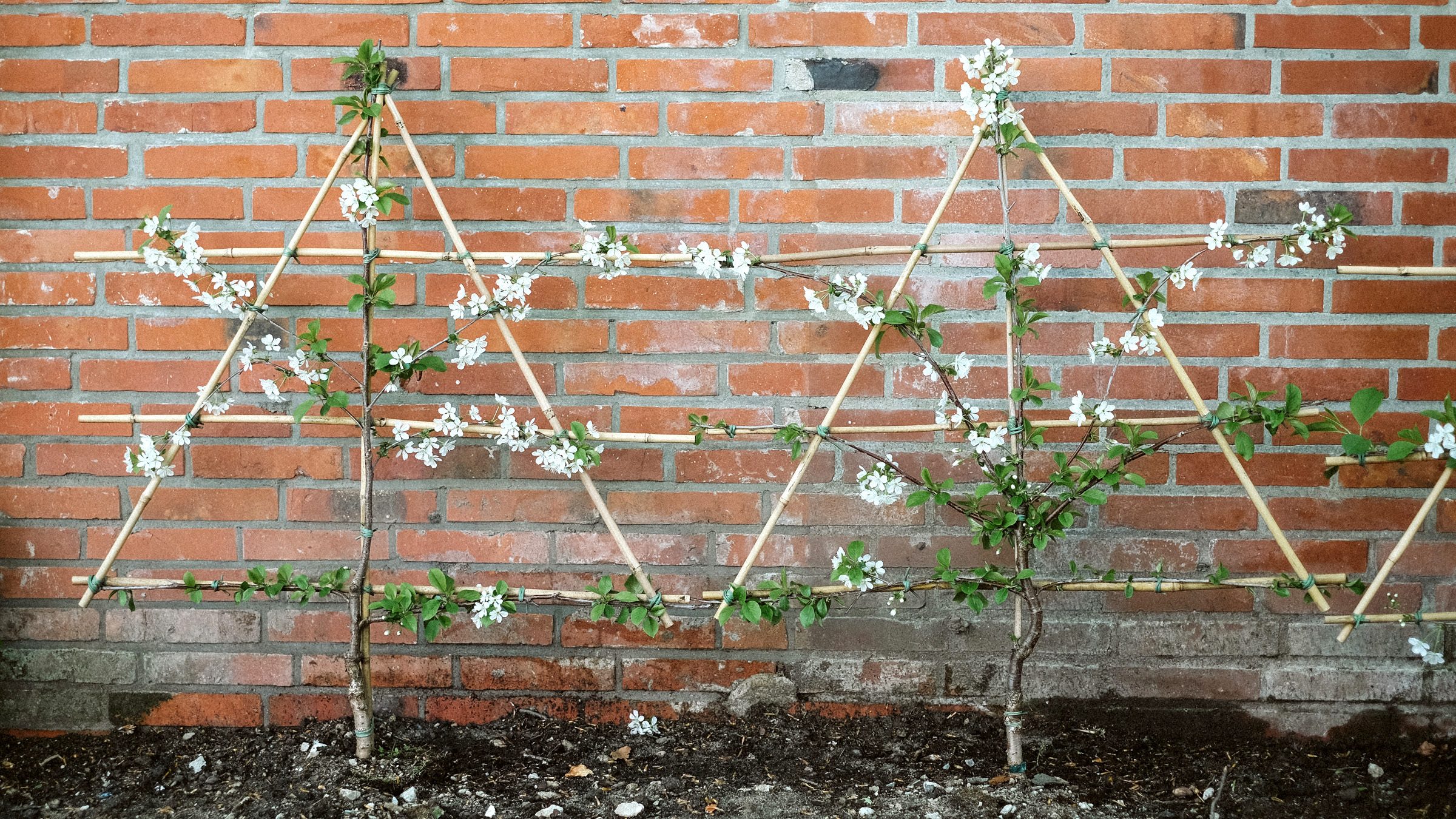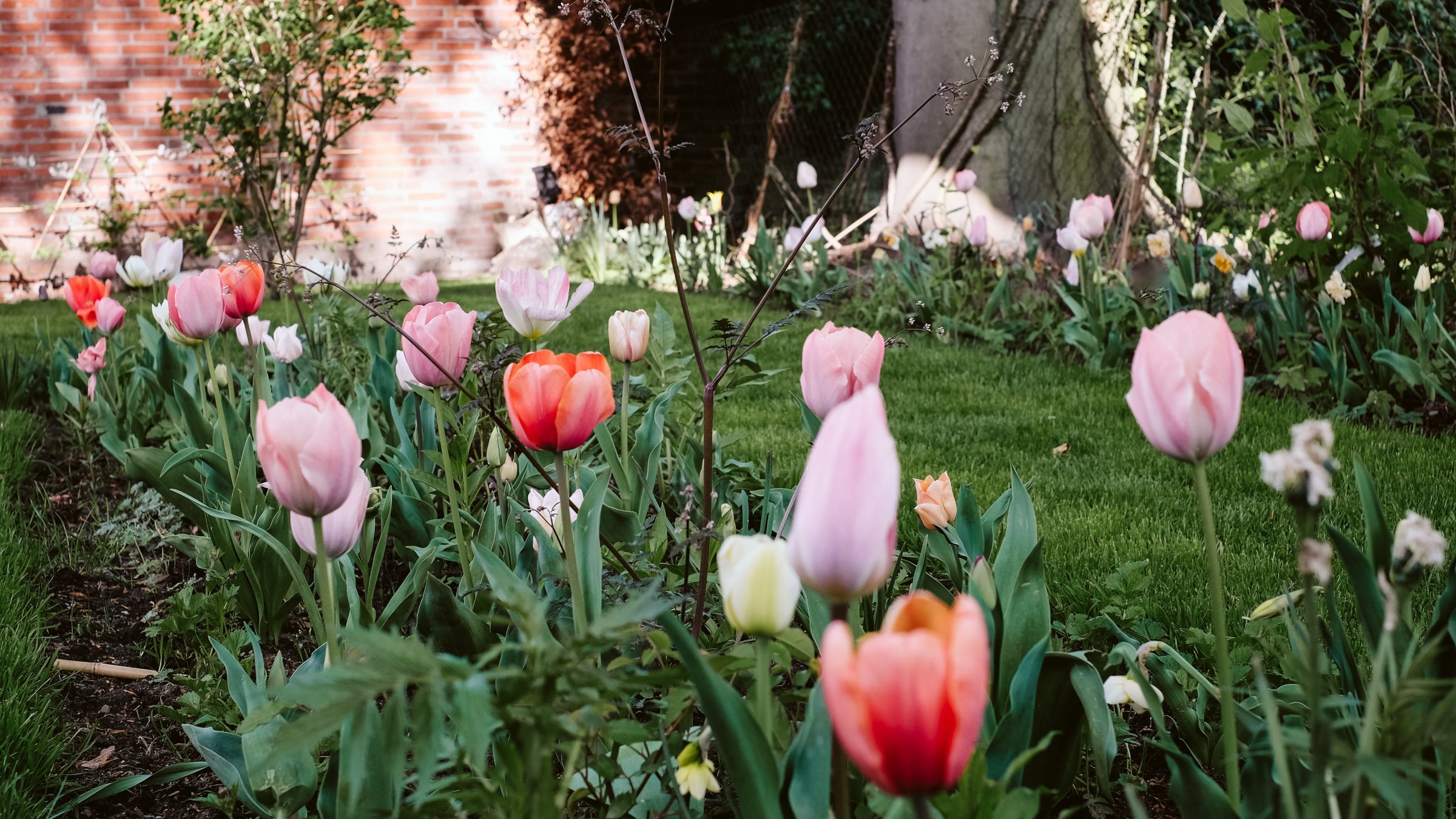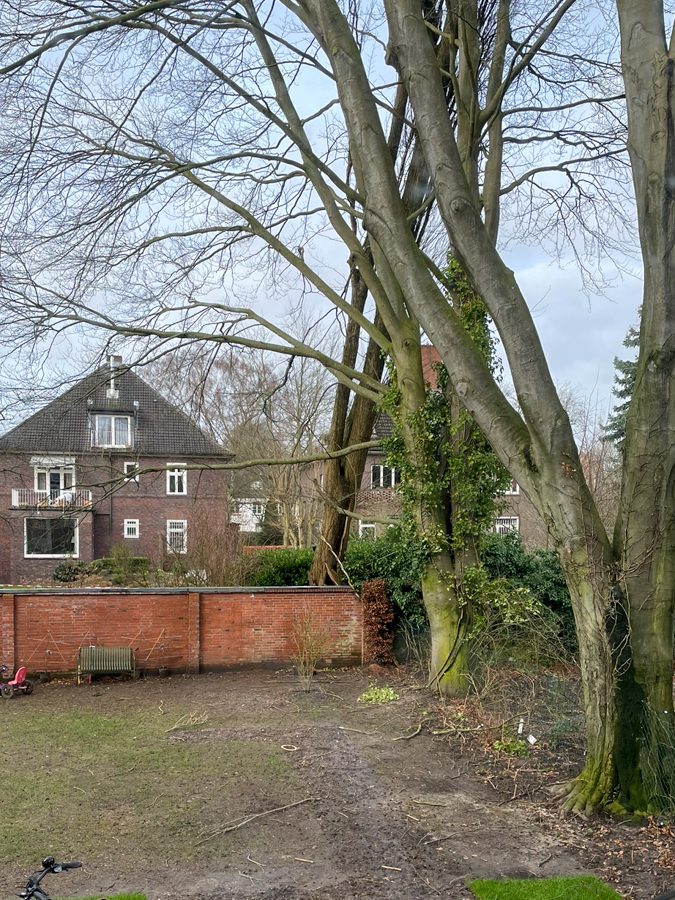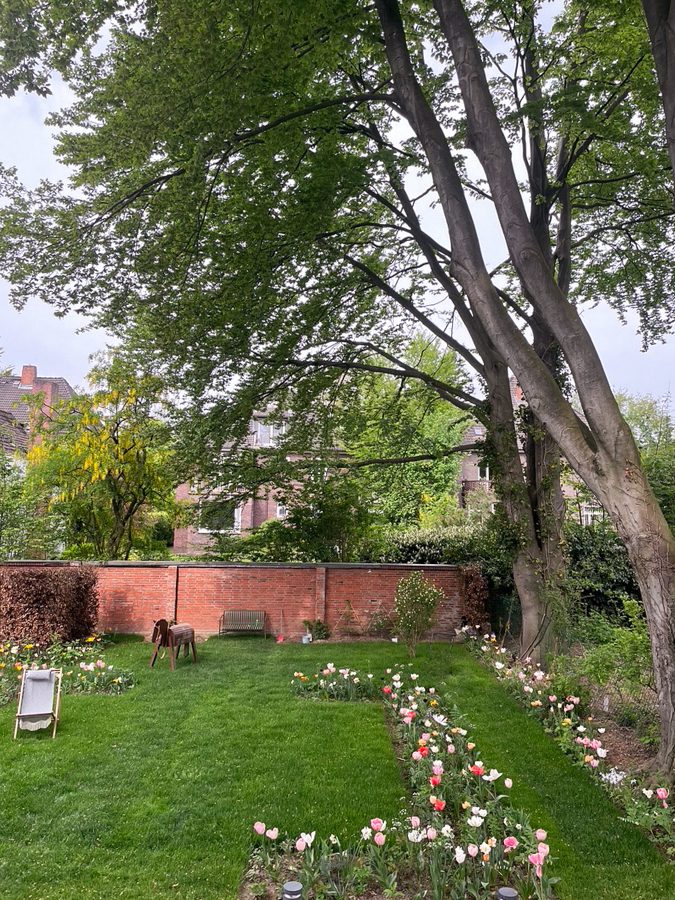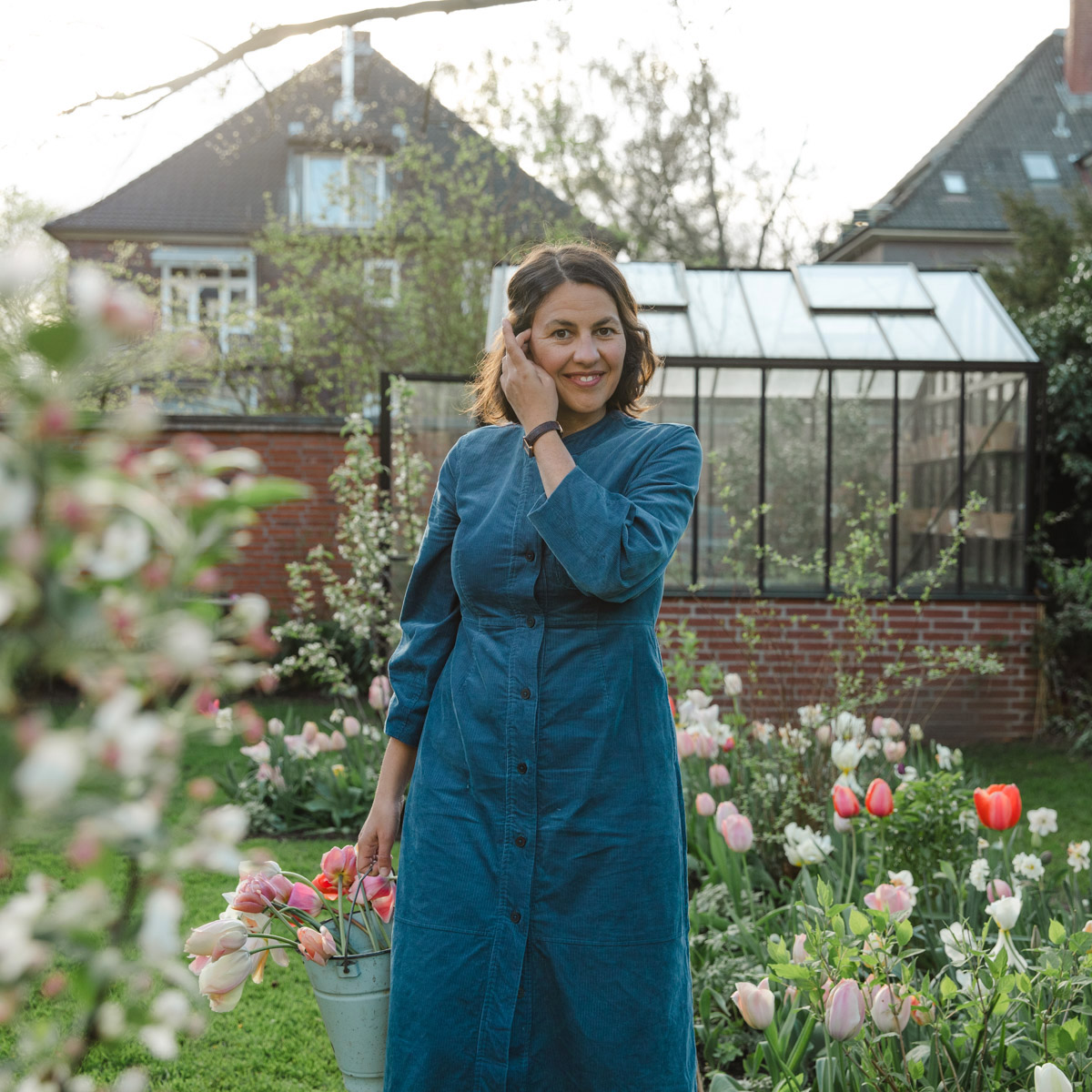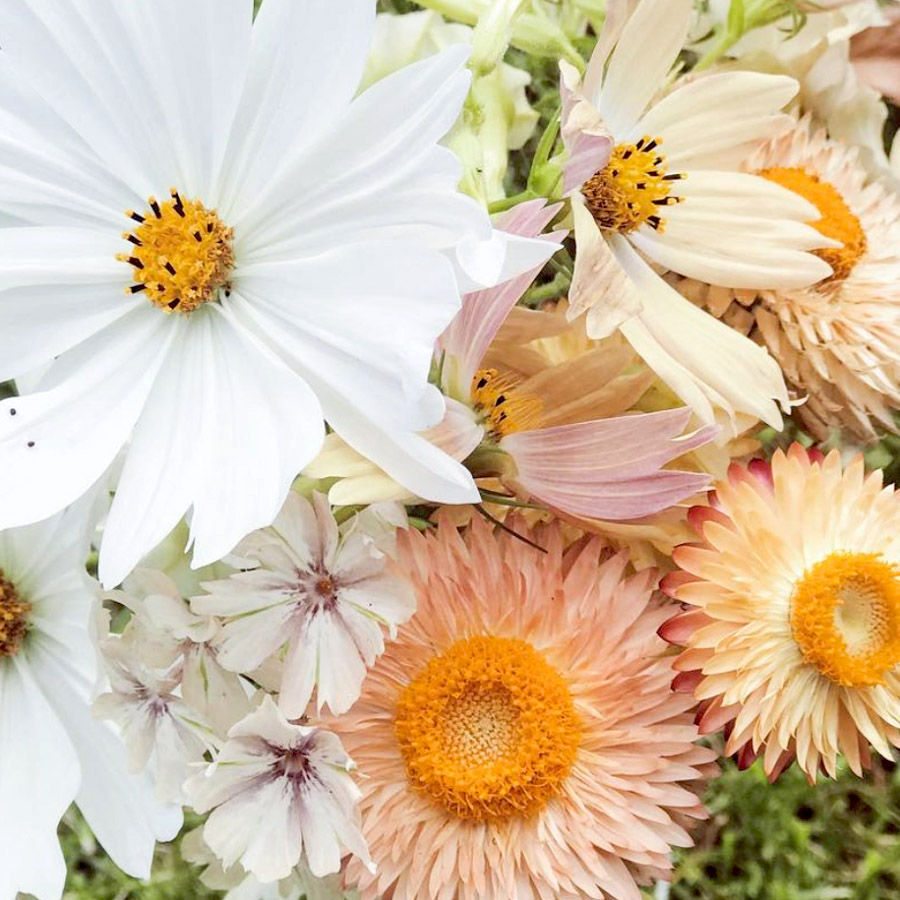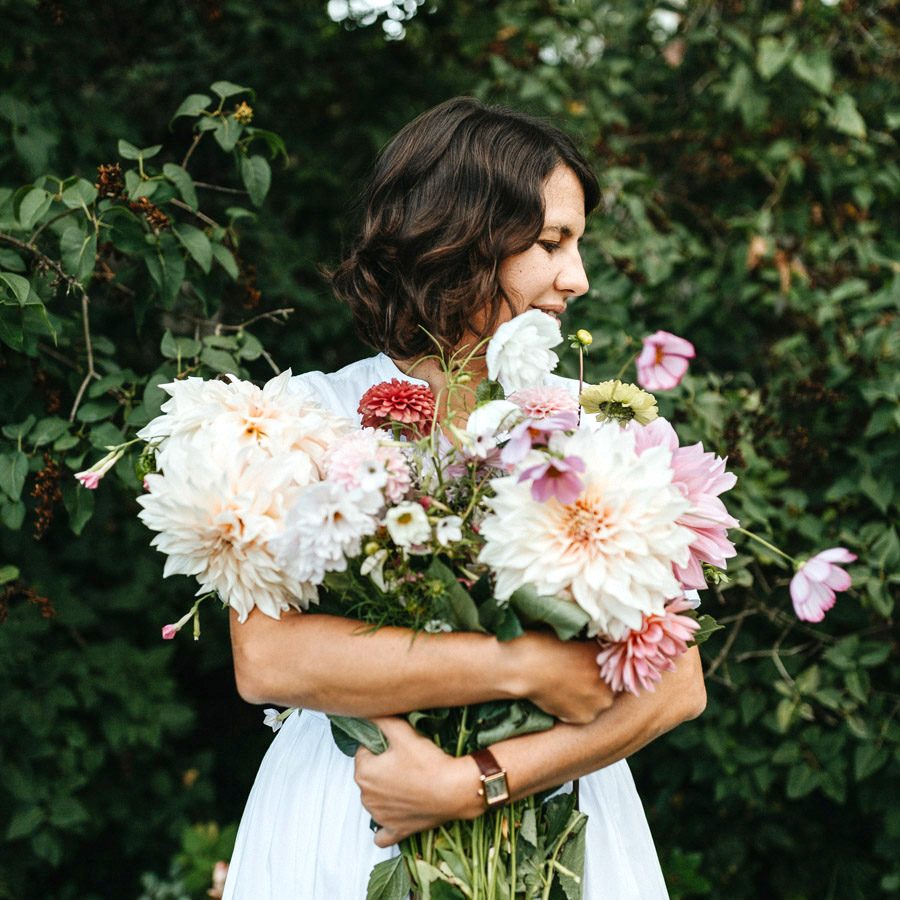A new chapter begins – designing my Hamburg garden Part I
How we turned a parking deck with grass carpet into a garden
When I first visited the property in Hamburg, I immediately fell in love with this little spot of earth. The old brick wall and the four ancient copper beeches took my heart by storm. I had garden images of English townhouses in my head, wild and densely planted, at the same time structured and elegant. Only one question did arise: Isn’t this garden much too small for someone who has made his passion for gardening his profession? Wouldn’t I have to walk through ten different garden rooms if I’m so serious about gardens?
Back then, we made the decision to buy the house within two days and today I can say: It’s exactly the garden that suits me perfectly! Because if I’m honest, the truth is: Before I had children and founded this company, I sometimes gardened for eight hours at a stretch, literally until the sun went down. Then the babies came, and so did the business idea and ever since then I have been very overwhelmed by life at times. In Potsdam we had a good 600 square meter garden with a lot of weeds, a lot of old plants and at some point, I hardly had time to take care of it. So, I had to pay a lot of money for a gardener, as I wanted to continue testing new varieties, trying out planting combinations and sowing seeds. The assistance was helpful, but slowly I lost contact with gardening completely.
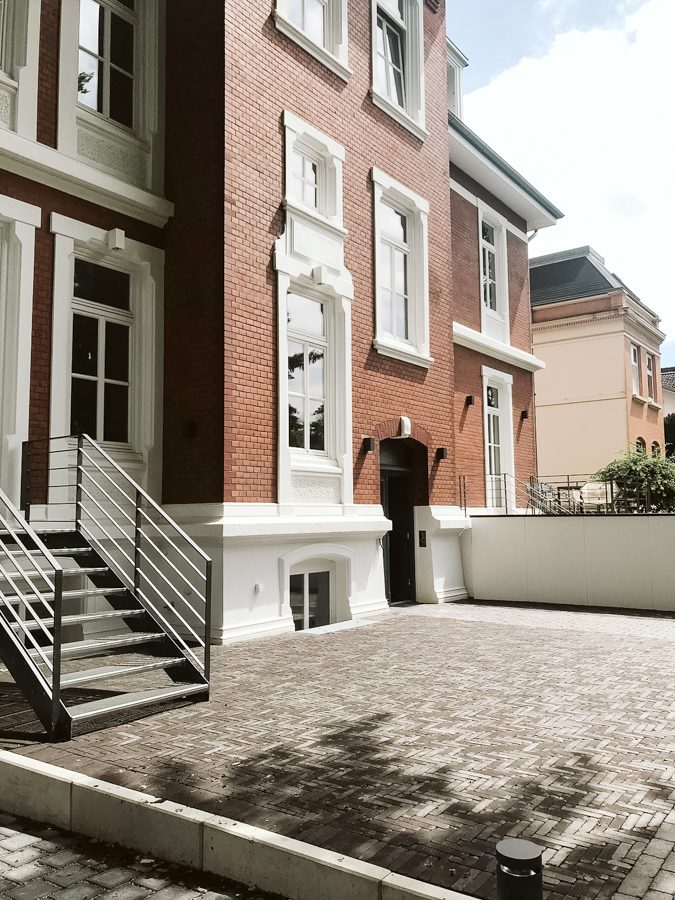

The beauty of my new 250 square feet is that I have become a gardener again with full passion. It’s just the size that I can design and maintain on a day-to-day basis. And since spring has really kicked in, I’ve had my fingers in the soil every day and am very happy to now have things in my own hands again.
On Instagram I noticed how incredibly high your interest in my garden design is, and the idea was born to describe the process in several articles here and to take you with me. On this journey, of which I myself do not yet know exactly where it will lead.
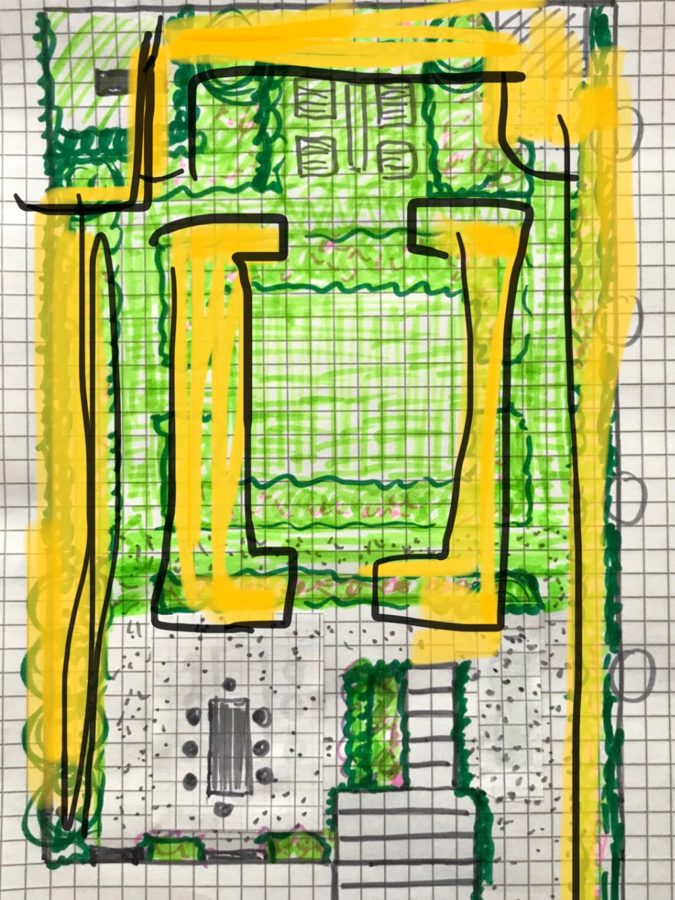
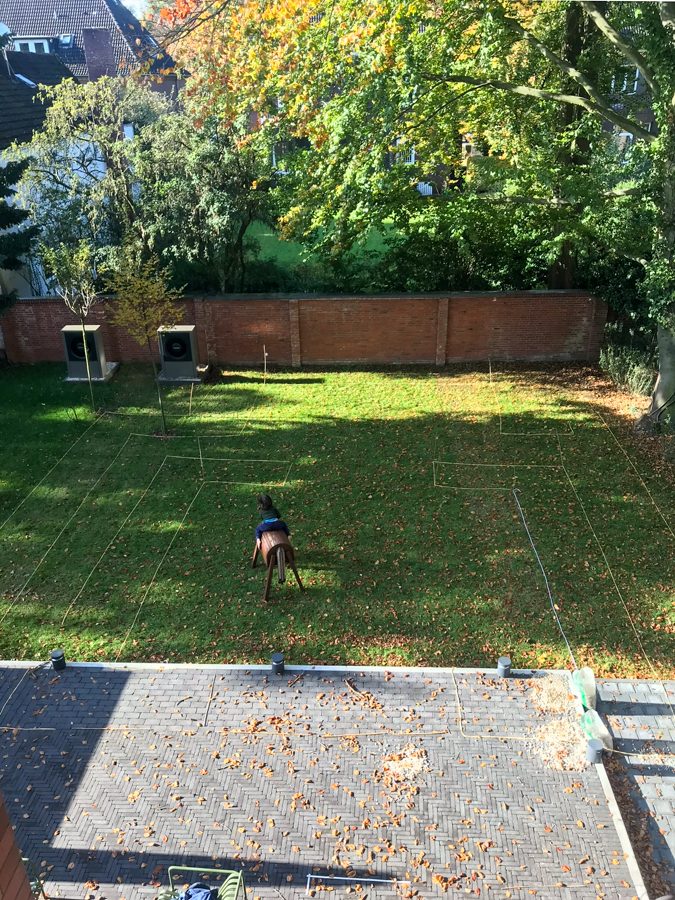
A start was made last November when the first excavators rolled in. The real estate developer had a terrace made of modern dark clinker and concrete blocks, which hovered a good 40 cm above the turf. It felt like a parking deck and was the first thing to change. Instead, we now have a much smaller, ground-level patio area with very natural-looking Rhine gravel (8/16 grit) .The crunch of it under my feet makes me happy every day.
Then in November I designed a rough sketch of the garden structure and we also planted a framework of hardy perennials that tolerate the clay soil and semi-shaded situation well. But why did I choose a rather formal structure? Again and again I encounter this question. Therefore, here is a little digression into my way of garden design.
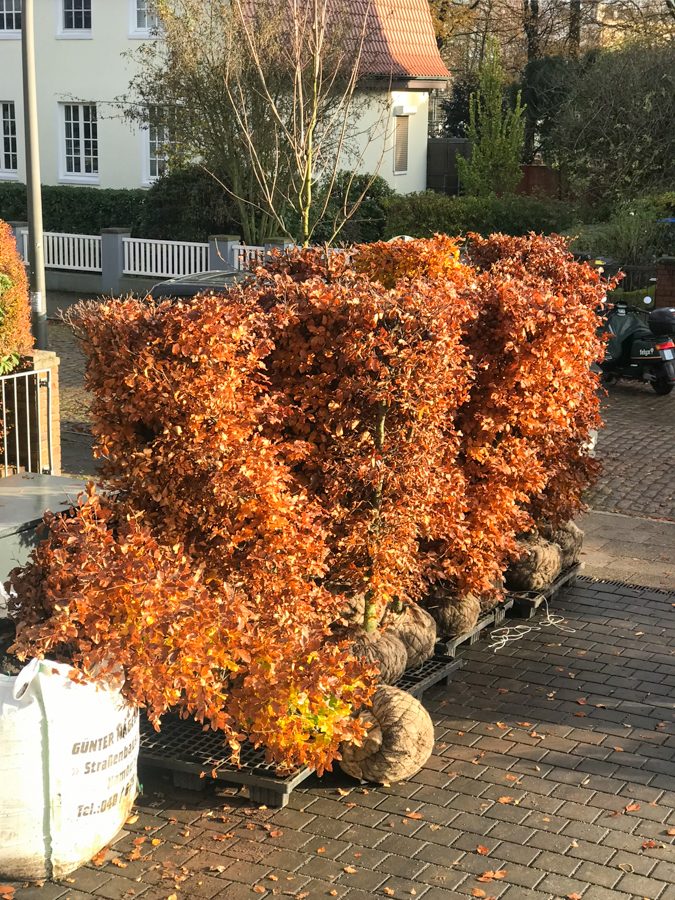
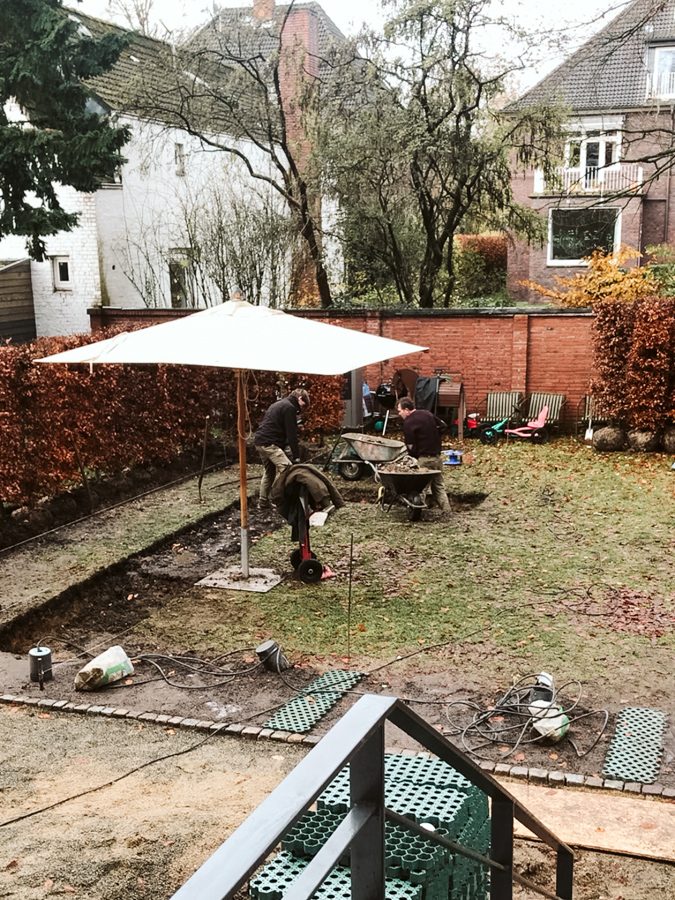
There are many criteria according to which one can proceed. Often the needs of the owners are in the foreground: the father gets his vegetable patch, the child his/her sandbox, the mother the rose pavilion. This usually looks very jumbled together. Or one sets completely on the topic “easy care” and plants mainly roll lawn (unfortunately care-intensive) and evergreen woody plants. Some also long for favorite vacation worlds in the garden: The Mediterranean garden is supposed to remind of the last wonderful summer on Sicily.
For me, however, only one thing has proven to be a truly meaningful criterion: creating the garden with an awareness of the place in which it is embedded. And I am radical: this criterion is above everything. Even above my own needs. I sometimes long for Sicily too, or for a beautiful evening in the country with chirping crickets, sitting under huge elderberry bushes. But I’m not tempted.

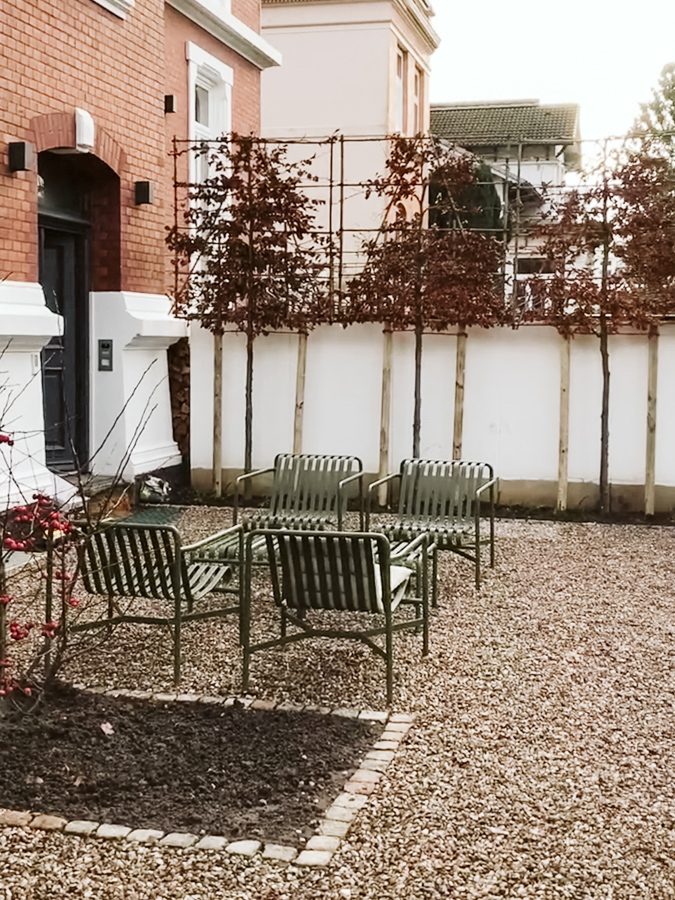
When I developed the concept for our new Hamburg garden, the only thing that was relevant was the location: We moved into half of a stately villa. Our ceilings are almost 4 meters high and the room doors look like in a theater. The garden behind is not large and follows a strict rectangular layout. The need to soften these clear, stately structures with round shapes is obvious, but would lead to a strange disharmony (a landscape garden in a square would be anything but natural)..
I did the opposite: the beds follow the strict lines and emphasize the formal, representative character of the house. The garden could have been laid out like this 100 years ago when it was built. It is in absolute harmony with the place and the urban, very orderly surroundings.
Nevertheless, it becomes modern and soft. The planting is wild and organically designed. Opulent plants like roses or irises are set in exciting contrast with large, delicate, transparent flowers. Contrasts at all, they are essential to bring out the best in plants. A wild perennial bed in front of uncut wild summer shrubs? That won’t work. Everything would blur. The freshly planted austere copper beech hedge continues the brick wall and in front of it a wildness is allowed to emerge, the essence of which only becomes visible through the calm background.
The beds are formal and form lawn paths lined with perennials that lead to the back brick wall. Here, a plain bench can be used to enjoy the morning sun (and the house!). The gravel patio is bordered with historic granite pavers and offers space for a leisurely round of coffee on Hay’s beautiful Palissade furniture. These are so sturdy, they stay in the same spot summer and winter. After all, I want to enjoy the garden all year round!
We have also placed four espalier trees (also copper beech) as a privacy screen from the neighbors (even in winter, the leaves remain on the branches. The best kind of hedge if you don’t like evergreens like me). Towards the other neighbor’s house the view is preserved, but delimited a bit more diffuse with wild roses (Rosa multiflora), Clematis montana, honeysuckle and hydrangea (Hydrangea grandiflora). The other woody plants: apple trellis, morello and rambler (‘Ghislaine de Feligonde’) for the brick wall and a beautiful quince tree (half trunk) that I am particularly looking forward to! We will replace an already planted hornbeam with a cherry tree. It can already be glimpsed: In addition to a rich abundance of flowers, I love planting fruit in the garden. Fruits and flowers in combination are a wonderful garden theme for me (how I love fruit blossoms!) and hopefully for my children the basis of their sensual memories of Hamburg when they grow up.
So much for today. In the next article, I’ll go into more detail about my perennial beds and tell you how I planned them using my perennial cards. I’ll link to my planting list and show how I work with the perennial kit. I always use the spreadsheet and the cards to keep track of things, which even a pro like me can quickly lose.
Here you will finde our Perennial Kit!
Soon I’ll also write something about maintenance and how I make it easy for myself. Stay tuned for more next time!
